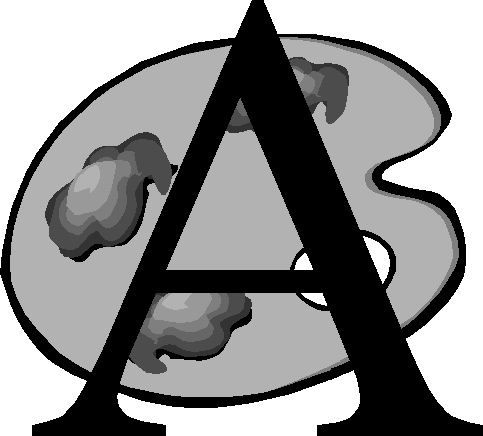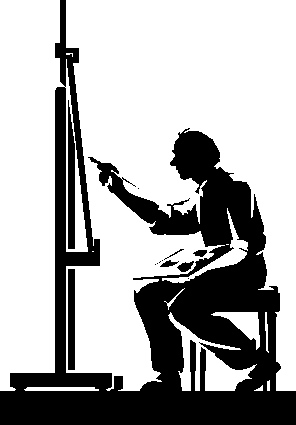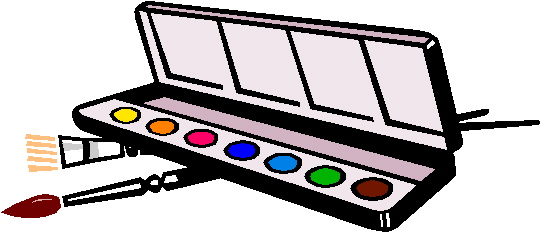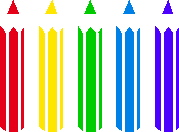HOME
Library Mission Statement
About the Othello Public Library
WHY Art for All?
WHAT is the Art For All program?
Staffing & Budget
Program Sponsors
Planning Process & Timeline
Program Evaluation
Slideshow of Local Artists
Links
|
 rt For All: Planning Process rt For All: Planning Process




Librarians at the Othello Public Librarian became interested in the idea
of doing arts programming at the library because of the concerns we had heard
voiced by community members about declines in funding for art education
in the schools, and the more general loss of funding for the arts. We
heard these concerns voiced by teachers, school administrators, school
board members, parents, and local artists. We believed that these concerns
were widespread, but wanted to test that notion through open meetings with
members of the community. We solicited opinions and ideas about doing arts
programming at the library, and whether this should be a priority, from
both the general community and stakeholders in the community that
we identified. Response to the idea of arts programs at
the library was very positive, though there were some naysayers, and we
decided to continue with the planning process.
We developed a planning
committee, made up of members of the library staff and each of the
stakeholder groupd the staff had identified in the community. The Art For
All Task Force, included representatives from the school,
parent, art, library, and business community. The purpose of this
joint planning committee was to develop partnerships that would be useful
for program implementation and
to draw on the superior knowledge and expertise of teachers and
artists in
the community in developing the programs. Library staff and community
stakeholders decided that the Art For All Task Force would be
responsible for developing and implementing the Art For All programs. It was
agreed that there
would always be at lesat one library staff member on the task force, and
that all programs and program budgets developed by the task force would
be subject to approval by the library staff and library board.
Month One: Early Planning Stages
- Design planning process. Decide who will be involved
in the planning process and what their roles will be.
- Identify stakeholders. (For example: schools, school board, teachers,
parents,
artists, librarians, library board, chamber of commerce, local
businesses.)
- Make initial contacts with members of stakeholder groups. Discuss
the feasability of meeting some part of the gap left by declining funds
for arts education through library arts programs. Seek informal input
from stakeholder groups.
Month Two: Solicit Community Input
- Research succesful arts programs in libraries.
- Formal meetings (1-2) with community members and stakeholders to
solicit input about library priorities and whether pursuing arts education
and appreciation
programming in partnership with local schools and artists should be a
priority. Solicit ideas for potential new arts programming at the library.
- IF, as we suspect, there is widespread support for arts related
programming from the schools, parents, local artists, and the business
community,
THEN select members from each
stakeholder group, including the library, for a Planning Committee.
- Short presentation to library staff and board about community input
and ideas, and planning process for new programs.
Month Three: Planning In Earnest
- Planning Committee continues to develop program ideas and seek
information about costs.
- Planning Committe works on developing partnerships among stakeholder
groups in the community to bring all interested parties together to make
these programs a reality.
- Planning Committee discusses potential funding sources. (For example:
grants, corporate sponsors, donations from local businesses and
organizations, donations of materials and/or skills.)
- Planning Committee members seek information about grant money that
might be used to cover program costs.
- Planning Committee presents results of their work to staff and board
for comment and to seek approval of programs recommended by the
committee.
Month Four & Five: Fundraising
- Planning Committee will continue to develop plans for those programs
approved by the board. This includes building partnerships and
seeking volunteers willing to donate their time to arts programs,
workshops, and exhibits.
- Members of the Planning Committee will prepare and submit grant
applications.
- Fundraising - Planning Committee members and volunteers will seek
donations of materials and sponsorship of programs from local businesses
and organizations.
- Planning Committee will keep staff and library board up-to-date on
their progress toward fundraising goals and program
implementation.
Month Six: City Council
- The library and the Planning Committee will develop and present a
request to City Council to fund a half-time volunteer co-ordinator and to
make up any gaps in program needs not filled by fundraising.
Month Seven: Hire Volunteer Co-ordinator and GO, GO, GO!
- Seek applications for and hire volunteer co-ordinator.
The volunteer co-ordinator will manage arts programming at the library
and co-ordinate staff and volunteer activities related to those
programs.
- Seek volunteers for the arts programs, based on the contacts made by
the Planning Committee.
- Start program implementation, based on plans developed by the Planning
Committee and library staff.
|



